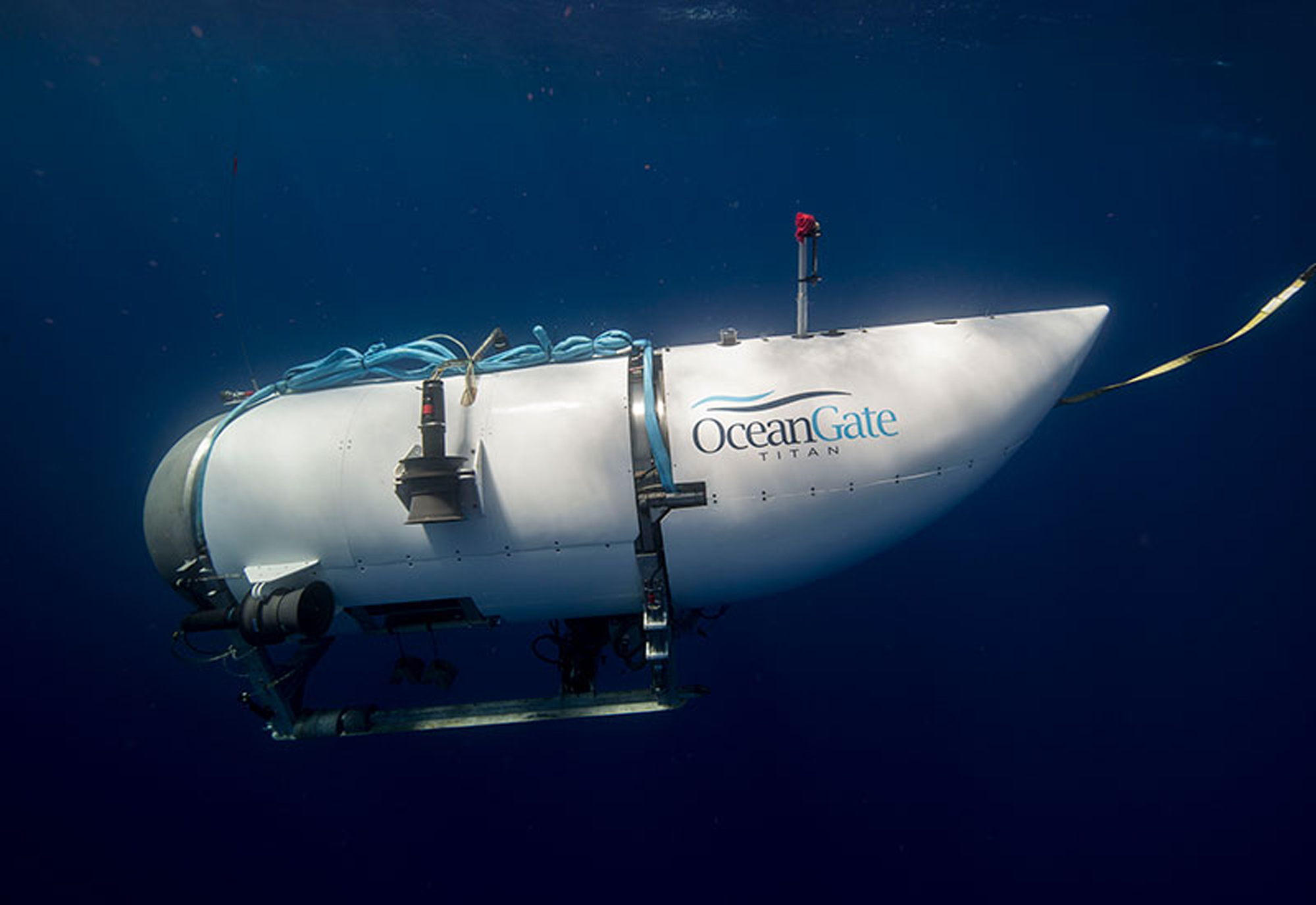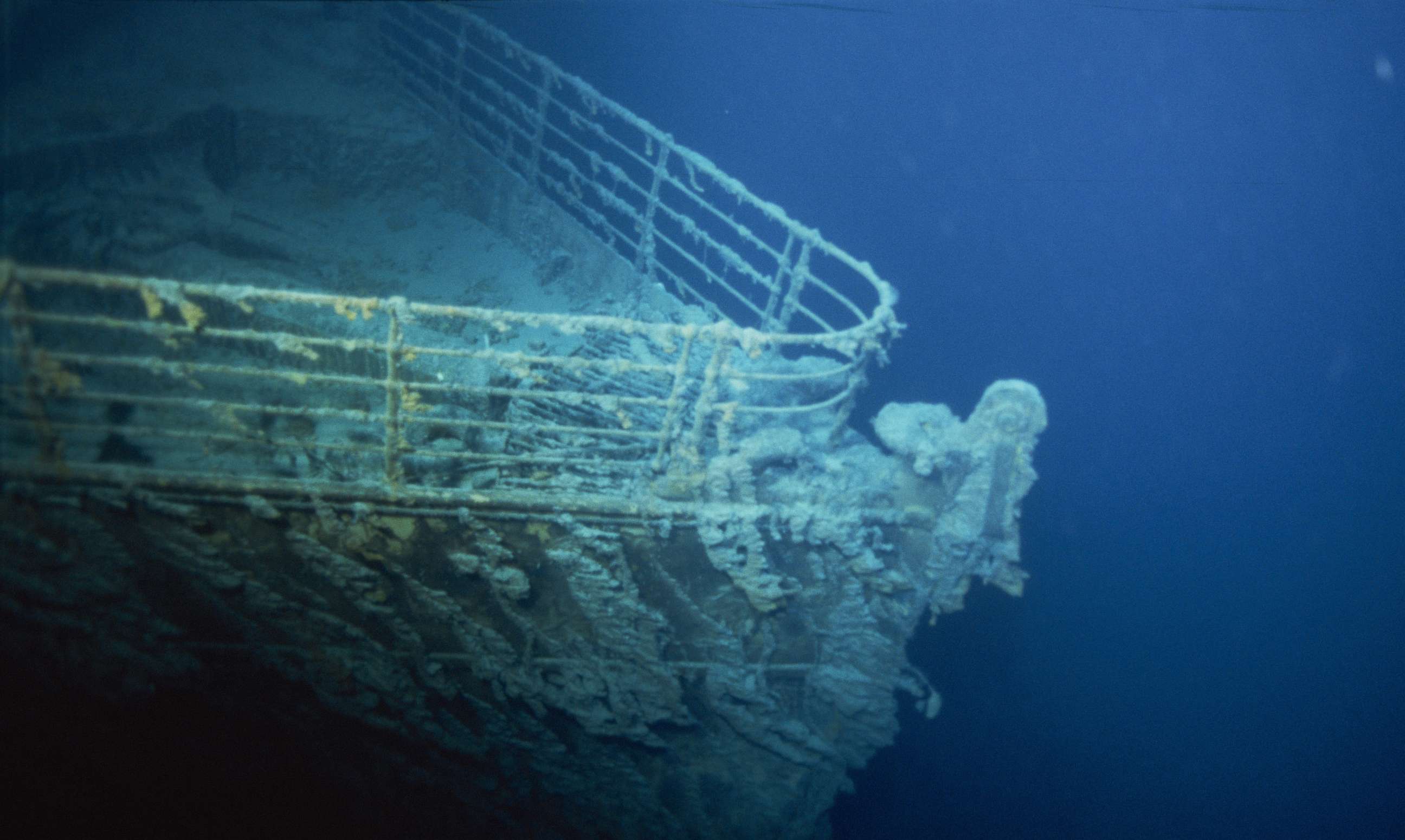5 people in a 20-foot sealed tube: Inside the missing Titanic submersible
Rescuers have three days to find the passengers before they run out of air.
A submersible on a tour of the wreckage of the Titanic was reported overdue by OceanGate Inc. on Sunday, prompting a Coast Guard search effort for the 22-foot, 23,000-pound vessel.
Designed with life support to sustain five crew members for 96 hours, the submersible would need to be rescued in three days to save its five passengers, according to the Coast Guard.
Stockton Rush founded Washington-based OceanGate Inc. in 2009 to make deep-ocean exploration more accessible to scientists and tourists.
Fourteen years, more than 200 dives and three submersible designs later, the company now finds itself in a desperate search to recover the submersible carrying five people aboard that's gone missing off the coast of Newfoundland, Canada.

OceanGate confirmed Monday it lost contact with a submersible, saying in a statement: "We are exploring and mobilizing all options to bring the crew back safely. Our entire focus is on the crewmembers in the submersible and their families. We are working toward the safe return of the crewmembers."
Here's what we know about the submersible:
How is the submersible constructed?
OceanGate has operated three submersibles since its inception, with the first two vessels -- the Antipodes and Cyclops 1 -- able to reach 1,000 feet and 1,640 feet, respectively.
OceanGate's only submersible able to reach the Titanic's wreckage is called the Titan, a carbon-fiber and titanium vessel that can reach 13,123 feet, the company says on its website. (The Titanic rests 12,400 feet under the surface).

The vessel is primarily constructed of lightweight carbon fiber, which is spun into a rigid tube for the vessel's body, specification sheets show. Two titanium caps are secured to the carbon-fiber body, with one cap including a thick transparent porthole.
Nine feet wide and only 8 feet tall, the Titan leaves little room for its passengers, who sit on a subfloor inside the carbon-fiber tube. A photo in the Titan's specification sheet shows five passengers seated on the vessel's floor with limited room to move or stand.
"It's not a ride at Disney, you know," OceanGate Expeditions software security expert Aaron Newman said in a promotional video for the expedition. "There's a lot of real risk involved, and there's a lot of challenges."
According to the same specification sheet, the vessel carries four electric thrusters that move it through the water at roughly 3 mph. The company also boasts that the Titan has an "integrated real-time health monitoring system" that actively accesses the vessel's structural integrity throughout the expedition.
In marketing materials for the 2023 Titanic expedition, the company said it partnered with the National Aeronautics and Space Administration, the University of Washington and Boeing to design the hull of Titan.
According to the company, Rush manned Titan's first "validation dive" to demonstrate that the vessel could reach a depth of 4,000 meters on Dec. 10, 2018. Rush completed the dive in 7 hours, taking multiple pauses to assess the vessel's integrity, the company said.

Months after the vessel's validation, OceanGate began recruiting "citizen explorers" for a six-week expedition to the Titanic in 2019. The company initially charged a $105,219 "mission support fee" for each traveler, according to a press release. The 2023 expedition cost travelers roughly $250,000.
How does the Titan work?
OceanGate was able to reduce the cost of its vessel by using generic components and novel launch methods for the craft, according to the company.
"The use of off-the-shelf components helped to streamline the construction, and makes it simple to operate and replace parts in the field," the company notes on its website.
The Titan was also designed with a patented launch and recovery platform, according to the company. Pushed into the water from the back of a boat, the Titan would rest atop a recovery platform until it reaches roughly 30 feet below the surface, where ocean currents are generally less intense.
From there, the submersible separates from the platform to navigate to the ocean floor.
"Communication is really key, knowing that they never lost communication," a former passenger, Kelly Parsons, said about the safety of the vessel in an OceanGate video.
What are the rescue options?
Retired Navy submarine commander David Marquet told ABC News the viability of the Titan's rescue depends on the location of the submersible.
If the submersible is floating on the ocean's surface after a malfunction, rescuers would need to locate the craft within three days to unbolt its titanium hatch to provide the passengers with fresh oxygen.
"We know we lost communication," Marquet said. "It's probably not just malfunctioning because then they would have just come back up to the surface and they would have started communicating from the surface, so I fear something worse happened."
The search effort would be more time-consuming and complicated if the craft is still submerged under the water, according to Marquet. Rescuers would have to locate the submersible itself and find a way to extricate it from the ocean -- both immensely challenging tasks, he said.
Most submarines, including military attack submarines and the vessels that rescue submariners during emergencies, cannot reach the depths that Titan can reach, complicating the search, Marquet added.




